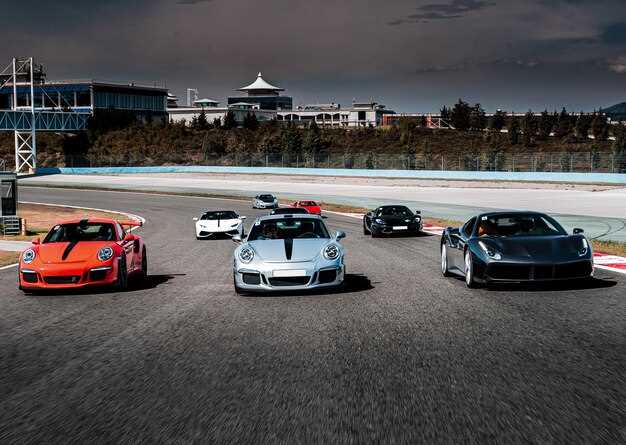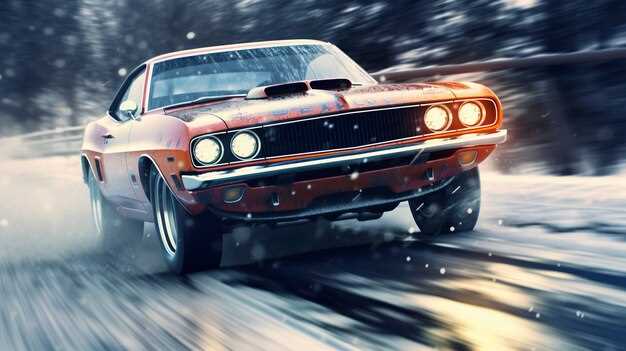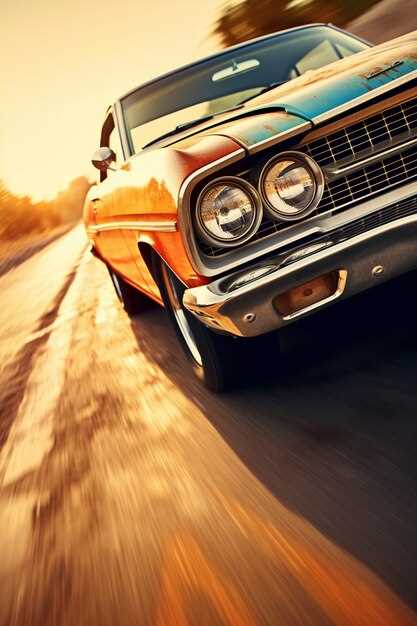
In the world of automotive performance, the debate between American muscle cars and Japanese Domestic Market (JDM) vehicles stands as a defining line in drag racing culture. Both factions present unique engineering philosophies, aesthetics, and performance capabilities that appeal to enthusiasts and racers alike. While American muscle cars embody raw power and a nostalgic homage to the golden age of automotive engineering, JDM vehicles are synonymous with precision, agility, and cutting-edge technology.
American muscle cars are celebrated for their formidable V8 engines, producing immense horsepower and torque that propel these beasts down the quarter-mile with exhilarating speed. The rumbling sound of an American muscle car echoes through drag strips, drawing attention and admiration from fans. These builds often focus on maximizing engine output, incorporating superchargers, and optimizing weight distribution to achieve stunning acceleration times.
On the other hand, JDM builds are revered for their balance between performance and handling. Typically powered by turbocharged inline engines or rotary setups, these cars showcase innovative engineering that emphasizes responsiveness and lightweight construction. JDM builders often utilize advanced tuning techniques, enhancing boost levels and refining suspension systems to create vehicles that not only excel in straight-line speed but also on twisty circuits.
As we delve deeper into this comparison, we will explore various factors including design philosophy, modifications, and culture surrounding American muscle versus JDM drag car builds. Understanding these differences will provide valuable insights for enthusiasts looking to optimize their builds or simply appreciate the divergent paths taken by these two automotive powerhouses.
Drag Car Builds: American Muscle vs JDM Comparison
The world of drag racing presents two dominant philosophies in car builds: American muscle versus Japanese Domestic Market (JDM) vehicles. American muscle cars, characterized by their high-displacement V8 engines and aggressive styling, focus on raw power and torque. These cars, such as the Ford Mustang and Chevrolet Camaro, are designed to deliver straight-line speed, often with modifications that enhance horsepower and optimize weight distribution. A typical muscle car build might include superchargers, aftermarket exhaust systems, and enhanced suspension tuning to bolster performance on the drag strip.
On the other hand, JDM cars emphasize a lightweight chassis and balanced handling, often featuring turbocharged engines. Models like the Nissan Skyline and Toyota Supra are celebrated for their engineering precision and tuning potential. JDM builds typically prioritize boost pressure, intercooler efficiency, and advanced electronic management systems. Customization often involves installing larger turbos, remapping engine controls, and fine-tuning suspension setups for maximum traction during races.
While both builds have their merits, the choice often comes down to personal preference. American muscle cars provide an exhilarating soundtrack and immediate power delivery, appealing to those who relish brute force. Conversely, JDM builds offer agility and sophisticated performance dynamics, attracting enthusiasts who appreciate engineering mastery. In a drag race, muscle cars may excel in straight-line speed, while JDM cars could leverage their lightweight advantages and handling for optimized launches and cornering.
Ultimately, the American muscle versus JDM comparison highlights distinct philosophies in car culture, with each category delivering unique experiences for drivers and spectators alike. Both have carved a niche in the automotive landscape, appealing to different generations and preferences in the quest for speed and performance on the drag strip.
Choosing the Right Engine for Your Build: V8 vs Turbocharged Options
When it comes to building a drag car, one of the most critical decisions you’ll face is selecting the right engine. The choice between a V8 engine, often associated with American muscle, and a turbocharged option, commonly found in JDM builds, can significantly affect performance, reliability, and the overall character of the vehicle.
V8 Engines are synonymous with American muscle cars, delivering massive displacement and power typically in the range of 400 to 800 horsepower. Their robust build allows for longevity and withstands high stress from racing scenarios. V8s excel in delivering low-end torque, making them ideal for quick launches off the line. The deep rumble of a V8 is not just iconic; it adds to the thrill of driving a muscle car. Moreover, the aftermarket support for V8 engines is extensive, with numerous upgrade options available, allowing builders to easily increase performance.
On the other hand, Turbocharged Engines are a hallmark of JDM performance vehicles. These engines, often smaller in displacement compared to V8s, utilize forced induction to produce impressive power outputs relative to their size. Turbocharged engines typically offer a better power-to-weight ratio, which can be advantageous in drag racing. They also provide a broad power band, allowing for quicker shifts and enhanced acceleration. However, they can be more complex to tune and may require more frequent maintenance due to the stress applied to the turbo components.
Additionally, consider the weight distribution and handling characteristics of your build when choosing an engine. V8s, being heavier, can affect the balance and overall dynamics of a car, while turbocharged engines can promote a lighter front end, potentially improving agility. It’s essential to align your engine choice with the desired outcome of your drag car–whether that be raw power and muscle or a more refined and lightweight JDM approach.
Ultimately, the decision between a V8 and a turbocharged engine should be based on your personal preferences, goals for the build, and the specific racing conditions you anticipate. Each option has its own unique advantages, and understanding these can guide you towards making the best choice for your drag racing aspirations.
Weight Reduction Techniques: How to Optimize Your Muscle and JDM Drag Car
Weight reduction is crucial for enhancing performance in both muscle and JDM drag cars. A lighter vehicle accelerates faster and improves overall handling. Here are some effective techniques to achieve significant weight savings.
1. Remove Unnecessary Components: Start by stripping away non-essential parts such as rear seats, spare tire, and any interior accessories that can be eliminated without compromising safety.
2. Lightweight Body Panels: Consider replacing factory components with lightweight alternatives made from materials like fiberglass or carbon fiber. This can significantly decrease weight while maintaining structural integrity.
3. Optimize the Exhaust System: Upgrading to a lightweight exhaust system can reduce overall weight. Performance exhausts designed for drag racing often use thinner materials and can also enhance horsepower.
4. Utilize Lightweight Wheels: Choose forged or alloy wheels over stock options. Lighter wheels not only reduce weight but also improve acceleration and braking performance.
5. Battery and Electrical Systems: Replace the standard battery with a lightweight version, such as a lithium-ion battery. Additionally, consider removing less critical electrical components to further cut weight.
6. Suspension Components: Opt for lightweight suspension parts like aluminum control arms or racing coilovers. This can decrease unsprung weight, improving handling and stability during acceleration.
7. Strip the Paint: While unconventional, removing old paint and applying a lighter coat can contribute to weight savings. This technique is more common in drag racing scenarios where every ounce counts.
8. Tune the Fuel System: Reducing the size of the fuel tank or utilizing a fuel cell can lead to weight loss. However, ensure that modifications do not compromise the car’s performance and range.
In conclusion, implementing these weight reduction techniques can optimize both muscle and JDM drag cars. Careful consideration of the balance between weight reduction and safety, along with proper modifications, will lead to improved performance on the track.
Tuning and Suspension: Key Differences in Performance Setup for Drag Racing

When it comes to drag racing, tuning and suspension play crucial roles in maximizing performance. American muscle cars and JDM vehicles each have distinct philosophies and approaches to these aspects, which can significantly influence their effectiveness on the strip.
Muscle Cars

American muscle cars prioritize raw power and aggressive tuning. Their setups often focus on the following:
- Engine Tuning: High displacement V8 engines are commonly found, with modifications such as superchargers or turbochargers to boost horsepower. The tuning aims to extract maximum torque at low RPMs for immediate throttle response.
- Suspension Setup: Muscle cars typically utilize a solid rear axle with leaf springs, allowing for better weight transfer during launches. Stiffer shocks and anti-roll bars are employed to maintain traction and stability.
- Traction Considerations: Wider tires and sticky compounds are essential. Muscle cars often use drag radials to improve grip, especially during hard launches.
JDM Cars
JDM vehicles, on the other hand, focus on a balance of lightweight design, turbocharging, and advanced suspension technology:
- Engine Tuning: JDM cars often feature smaller displacement engines, equipped with turbochargers to enhance power without adding significant weight. Tuning aims for a high RPM power band, allowing for sustained performance throughout runs.
- Suspension Setup: A multi-link suspension system is prevalent, providing better handling characteristics. Adjustable coilovers are commonly used, allowing racers to fine-tune their setups for optimal weight distribution and handling during launches.
- Traction Management: JDM vehicles often incorporate advanced electronics and systems like launch control to assist in managing power delivery and traction during acceleration.
Conclusion
In conclusion, the tuning and suspension setups for muscle and JDM cars in drag racing highlight their fundamental differences. Muscle cars emphasize sheer power and traction, while JDM vehicles leverage technology and balanced setups. Understanding these distinctions can help enthusiasts optimize their builds for maximum performance on the drag strip.




